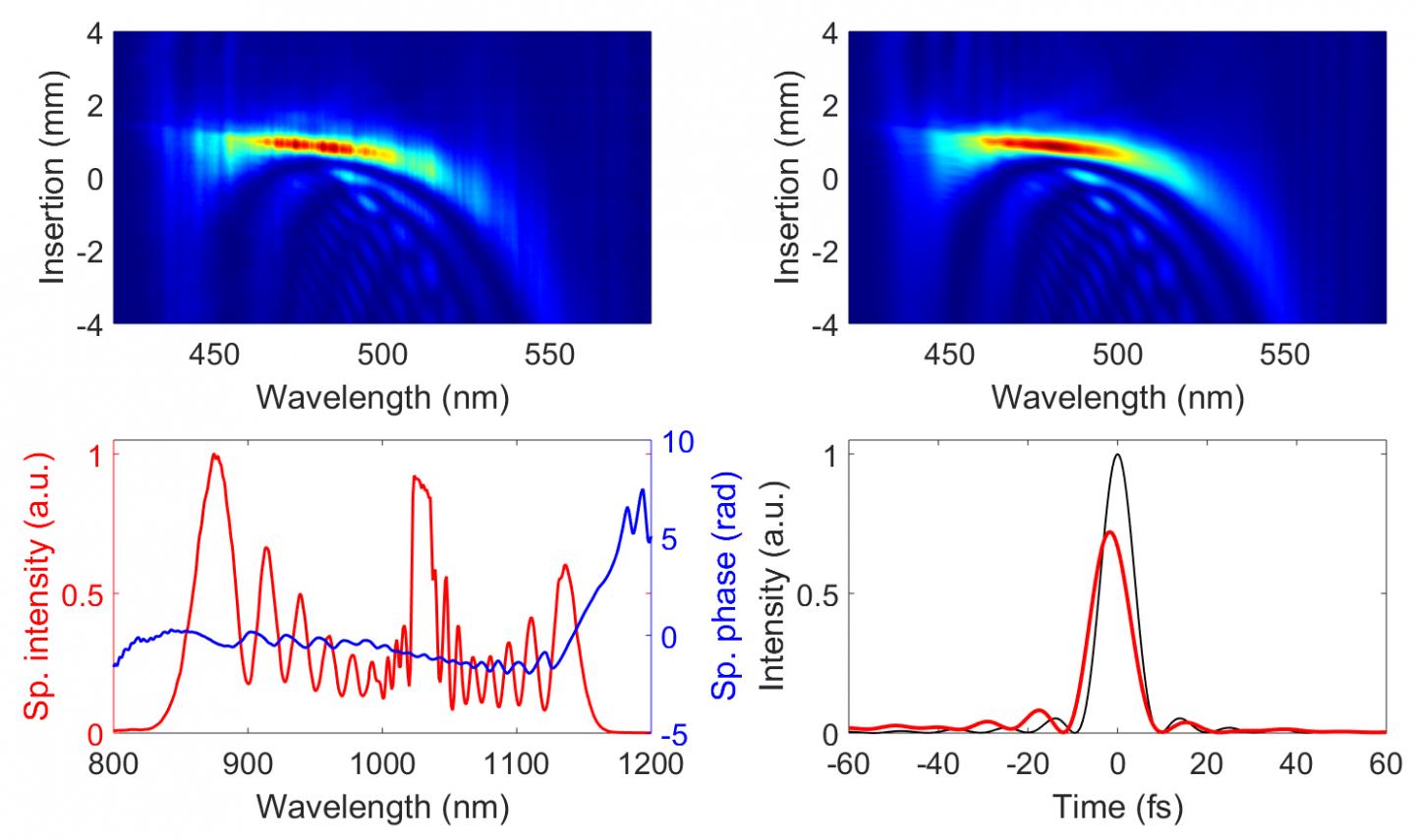
Credit: MBI
A team led by researchers from the Max Born Institute for Nonlinear Optics and Short Pulse Spectroscopy (MBI), Laser-Laboratorium Goettingen (LLG) and Active Fiber Systems (AFS) has generated multi-millijoule 3-cycle pulses at 318 W average power level. These results mark a significant milestone in few-cycle laser technology paving the way towards industrial applications. The report appeared in Optica as a Memorandum.
Extreme short light pulses containing only a few oscillations of the electromagnetic field are among the fastest events ever made by mankind. Although the first few-cycle pulses were produced about 30 years ago, they could only be used in cutting-edge science e.g. for time-resolved studies or attosecond pulse generation. In order to find their way into industrial applications, a number of major challenges need to be addressed, such as turn-key operation, and energy and power up-scaling of the few-cycle sources.
The MBI, LLG and AFS scientists followed a novel approach by directly compressing 300 fs long pulses from a high-energy, high-power laser system to the few-cycle duration. This requires a 30-times compression, which has only recently become feasible by the introduction of the stretched flexible hollow fiber technology, which offers unrestricted length scalability. In the study, a coherently-combined multi-channel fiber laser delivering up to 10 mJ pulses at up to 1 kW average power was used as the light source. This system is currently under development at AFS for the major European laser facility ELI ALPS in Szeged, Hungary. In the pulse compression, a 6-meter long stretched flexible hollow fiber was used which was developed together by MBI and LLG. As the pulses propagate through argon gas filled into the hollow waveguide, a nonlinear interaction called self-phase modulation takes place between the intense light and the gas atoms which makes the spectrum broaden. The pulses with substantially broadened spectrum can then be compressed to a shorter duration by compensating their spectral phase with a set of chirped mirrors. In this way the team succeeded to generate multi-mJ, 10 fs pulses at 100 kHz repetition rate at an average power of 318 W, which is the highest average power of a few-cycle laser ever achieved.
This achievement shows that using stretched flexible hollow core fiber technology high-power industry-grade lasers can be brought into the few-cycle regime. This opens up new possibilities for industrial applications, such as highly parallelized material processing.
###
Media Contact
Dr. Tamas Nagy
[email protected]
Original Source
https:/
Related Journal Article
http://dx.




